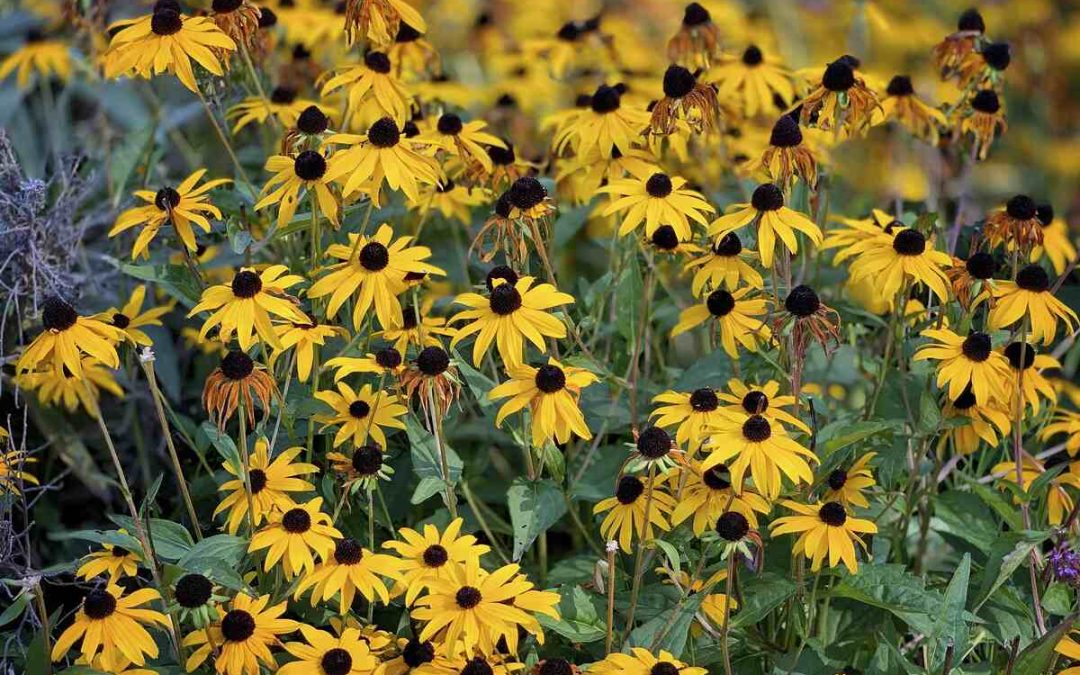You love checking out the arts scene and getting a bite to eat over by Central and Lowry, but your most favorite pastime in all the City of Lakes is taking in the wildflower garden at Theodore Wirth Regional Park. Emulate those relaxing vibes by planting your own native garden at home. We’ve rounded up 9 of the best native plants for Minneapolis to start you off.
In this article, we’ll cover:
9 Best Native Plants for Minneapolis, MN
1. Blazing Stars (Liatris)
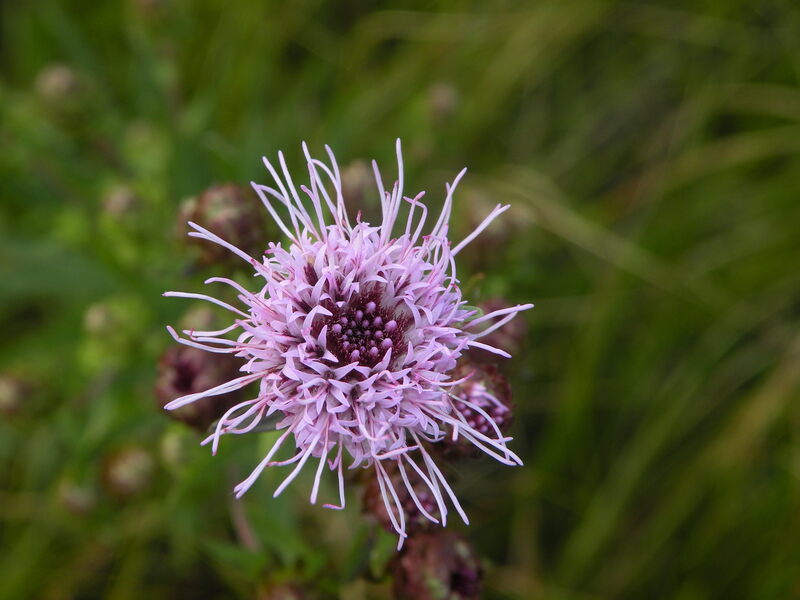
Photo Credit: Doug McGrady / Flickr / CC BY 2.0
Sprouting from stems with spiral, narrow, green leaves that are larger at the base and smaller toward the top, these wildflowers give off disc-shaped blooms of pink, purple, or white that grow on a cylindrical ‘spike’, making them the perfect addition to butterfly gardens and drought-tolerant gardens.
With 40-plus species — including “Rough Blazing Star” (liatris aspera) and Meadow Blazing Star (liatris ligulistylis) — there’s sure to be a type fit for your landscape.
Plant type: Bulb
USDA hardiness zone: 3 to 9
Sun: Full sun or partial shade
Soil: Moist clay, silt, or sandy soil that’s well-drained
Duration: Perennial
Bloom time: Summer
Water needs: Weekly for new plants; once established water as needed; drought-tolerant
Mature height: 1 to 5 feet, depending on species
Foliage: Narrow, green leaves with a spiral look; larger at stem’s bottom, smaller toward the top
Maintenance: Low; drought-tolerant
2. Prairie Onion (Allium stellatum)
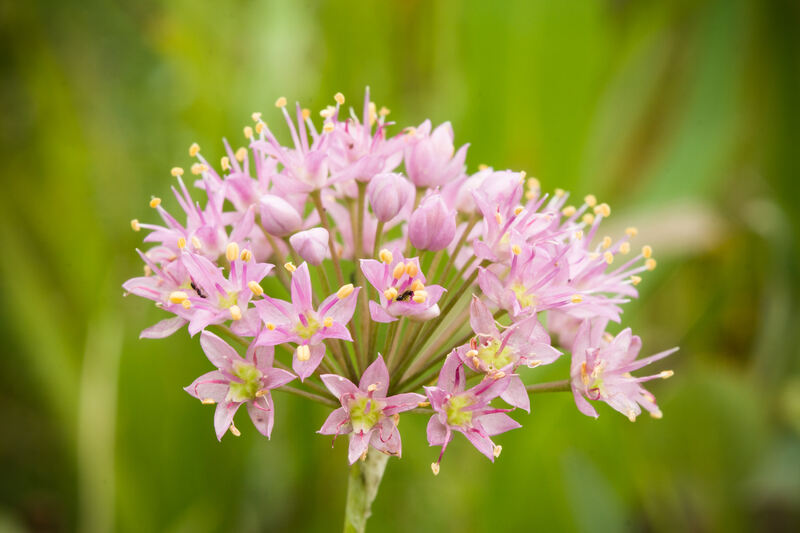
Photo Credit: Justin Meissen / Flickr / CC BY-SA 2.0
Named for the oniony scent that comes from its grasslike leaves, the prairie onion is a totally edible plant that’s easy to grow, drought-tolerant, and resistant to deer and rabbits. Blooming from a solitary stem, the up to 2-inch round, umbrella-shaped cluster of lavender-pink or white flowers displays its beauty for three weeks, typically in July and August. Plant with low-growing selections, as prairie onions do not grow well with taller, more invasive species.
Plant type: Bulb
USDA hardiness zone: 3 to 7
Sun: Full sun or partial shade
Soil: Well-drained; sandy, rocky, silt
Duration: Perennial
Fragrance: Oniony smell
Bloom time: Summer
Water needs: Occasionally, when soil is dry; otherwise, regular rain should be sufficient
Mature height: 1 to 2 feet
Foliage: Narrow and grasslike; emits the onion smell
Maintenance: Low; drought-tolerant, resistant to deer and rabbits
3. Wild Bergamot (Monarda fistulosa)
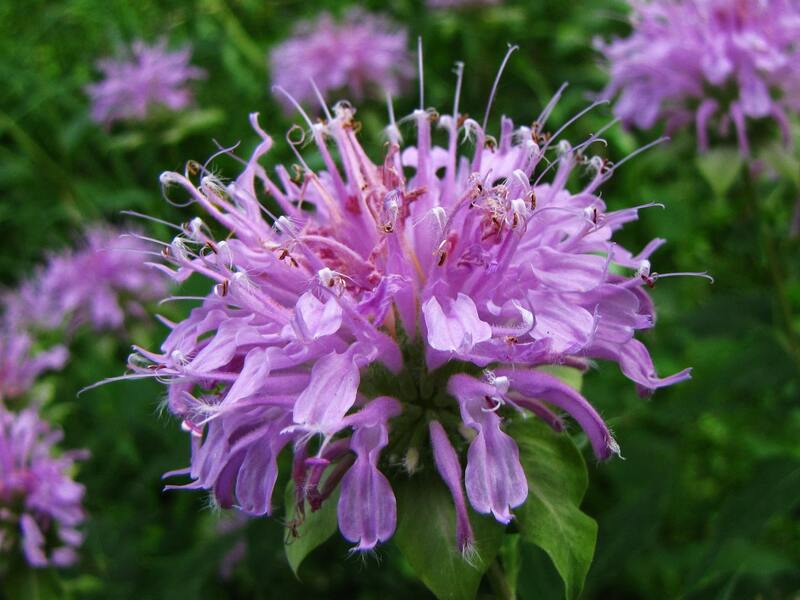
Photo Credit: U.S. Fish and Wildlife Service Headquarters / Flickr / CC BY 2.0
Considered fully established by year two of growth from seed, wild bergamot can be naturally found along roadsides, in meadows, and on prairies. It’s easy to grow and unbothered by invasive plants and poor soil conditions. Prized for its rounded clumps of tubular blooms that exhibit purple, pink, or white flowers from June to August, this plant will for sure bring all the bees (hummingbirds and butterflies) to the yard.
Plant type: Flower
USDA hardiness zone: 3 to 9
Sun: Full sun or partial shade
Soil: Shallow, rocky soil or clay that’s moist, well-drained, or dry-ish
Duration: Perennial
Fragrance: A blend of mint and oregano emitted from foliage
Bloom time: Summer
Water needs: Natural rainfall should be sufficient; withstands dry soil for a while
Mature height: 2 to 4 feet
Foliage: Green to grayish-silver with serrated edges; hairy underside, while top can be smooth or hairy; edible
Potential hazards: Moderately flammable/risk of fire
Maintenance: Low; drought-tolerant, deer- and rabbit-resistant
4. Black-Eyed Susan (Rudbeckia hirta)
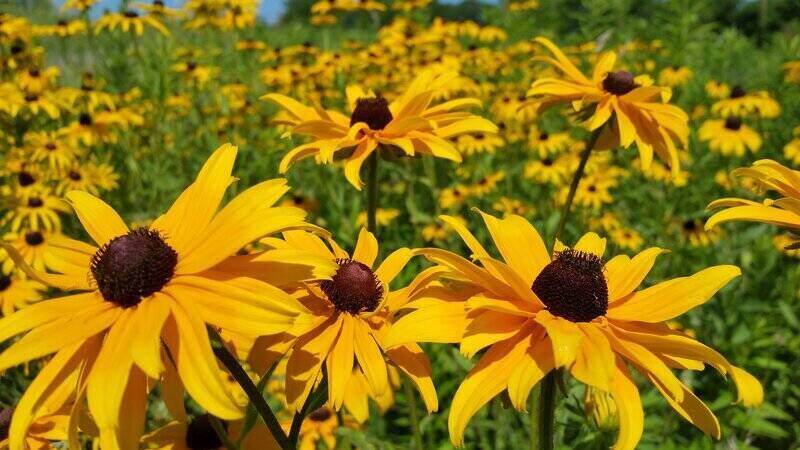
Photo Credit: Pxfuel
Because they bloom throughout the spring and summer, black-eyed Susans are ideal for planting as pathway borders, in container gardens, or in butterfly gardens. Due to their coarse, hairy leaf texture, these plants are naturally deer-resistant.
Plant type: Flower
USDA Hardiness Zone: 3 to 9
Sun: Full sun
Soil: Clay, sand, loam, acidic, moist, well-drained
Duration: Depending on growing conditions can act as a biennial, annual, or short-lived perennial
Fragrance: Sweet
Bloom time: Spring, summer, early autumn
Water needs: Medium. It has moderate drought tolerance
Mature height: 1 to 3 feet.
Maintenance: Low. Can self-seed freely. Black-eyed Susan can become aggressive if given too perfect an environment and insufficient competition.
5. Red Columbine (Aquilegia canadensis)
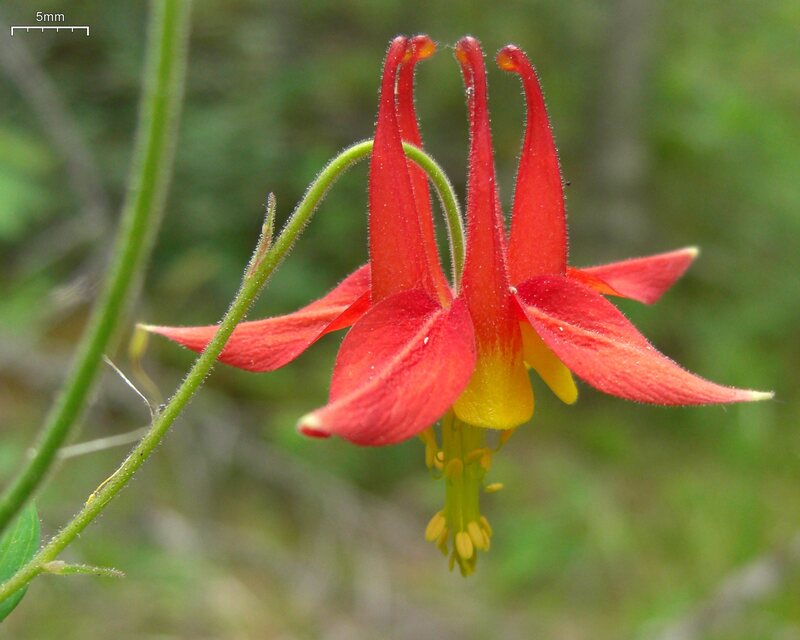
Photo Credit: Jason Hollinger / Wikimedia Commons / CC BY 2.0
Known for its red or yellow bell-shaped blossoms, this perennial flowers from May to July. While there’s no scent to this plant, its nectar attracts hummingbirds, bees, and other pollinators. Ideal for rock gardens, shade gardens, and as an accent plant, red columbine is resistant to deer and most insects; however, leafminers may cause cosmetic damage and duskywing caterpillars can be found feeding on the blue-green leaves.
Plant type: Flower
USDA hardiness zone: 3 to 8
Sun: Full sun or partial shade
Soil: Clay, silt, or sandy soil that’s well-drained, moist, dry-ish
Duration: Perennial
Bloom Time: Spring and summer
Water needs: Weekly or whenever soil is completely dry
Mature height: 1 to 3 feet
Foliage: Blue-green leaves grow in groups of three
Potential hazards: Moderately flammable/risk of fire
Maintenance: Low; deadhead blooms as needed, cut back in late summer
6. False Indigo (Amorpha fruticosa)
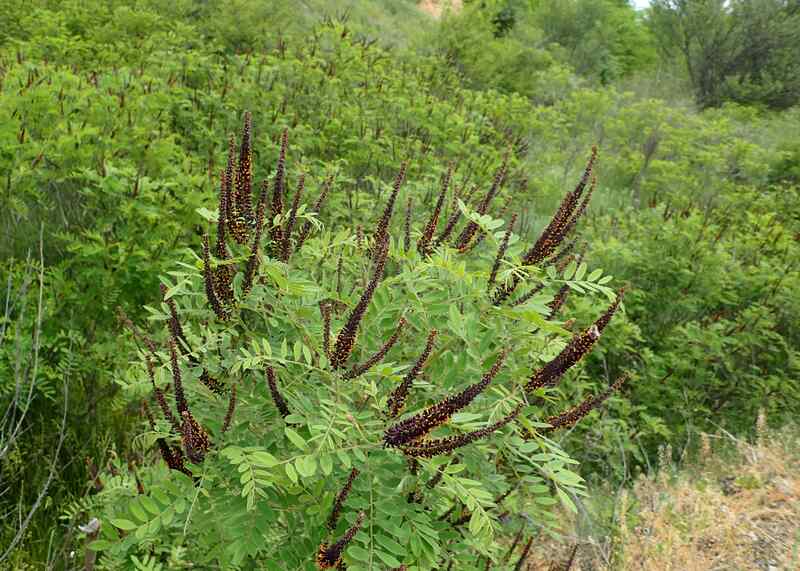
Photo Credit: Krzysztof Ziarnek / Wikimedia Commons / CC BY-SA 4.0
An ornamental shrub, false indigo works great as a privacy screen/windbreaker or border plant. Easy-to-grow from seed and deer-resistant — deer don’t like the velvety texture of the oblong leaves — this plant gives off purple, blue, or gold/yellow flowers from April to June and attracts butterflies and other pollinators.
Plant type: Shrub
USDA hardiness zone: 4 to 9
Sun: Full sun or partial shade
Soil: Clay, silt, high organic matter, or sandy soil; moist or somewhat wet to somewhat dry
Duration: Perennial
Fragrance: Light, vanilla scent
Bloom Time: Spring and summer
Water needs: Water regularly
Mature height: 4 to 15 feet
Foliage: Oblong green or gray/silver leaves that are velvety to the touch
Potential hazards: May contain alkaloids that are poisonous to animals
Maintenance: Low; prune in late winter to early spring to maintain shape
7. Wild Geranium (Geranium maculatum)
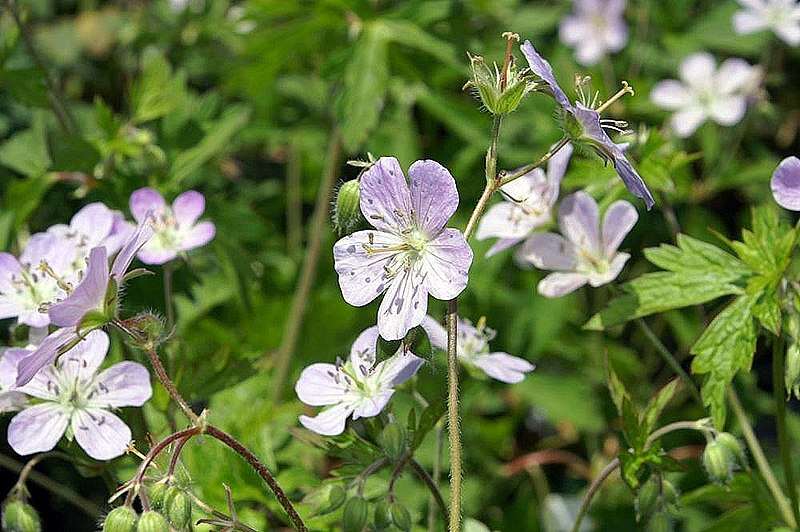
Photo Credit: David J. Stang / Wikimedia Commons / CC BY-SA 4.0
Frequently chosen as a ground cover plant, wild geranium’s star-shaped blooms, which show themselves from May through June, mainly come in lavender, blue, red, and pink, fading to white at the base. Groundcover plants can take the place of traditional lawn grass, making for a low-maintenance yard that not only cuts the need for mowing but also helps control erosion and weeds. Wild geranium attracts pollinators, too, and you can even make tea from its flowers.
Plant type: Flowering ground cover
USDA hardiness zone: 3 to 11
Sun: Full sun or partial shade
Soil: Clay, silt, high organic matter, or sandy soil that’s well-drained, moist, or somewhat wet
Duration: Perennial
Bloom Time: Spring and summer
Water needs: Water regularly
Mature height: 1 to 2 feet
Foliage: Green, compound, hand-shaped leaves with serrated edges; hairy on both sides
Maintenance: Low
8. Blue Giant Hyssop (Agastache foeniculum)
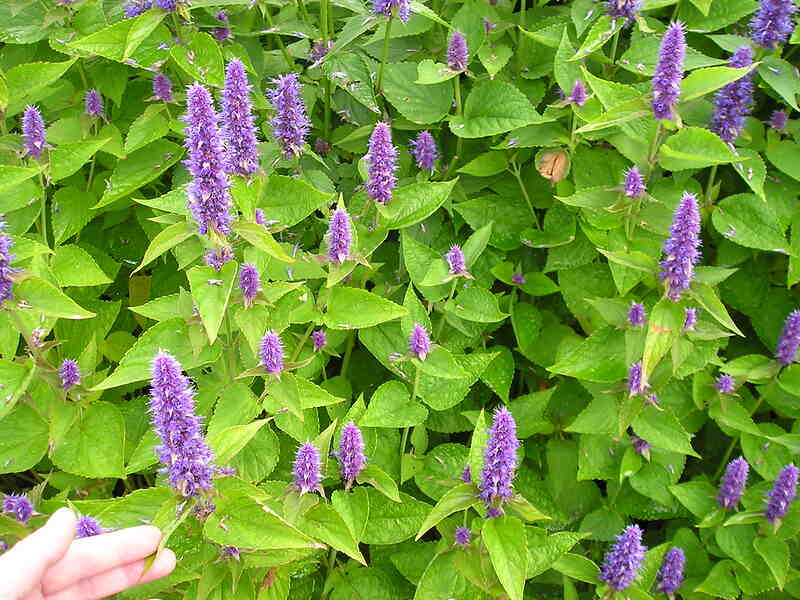
Photo Credit: Anna / Flickr / CC BY 2.0
Long used as flavoring in salads and teas (plus, its seeds can be used to bake cakes, cookies, and muffins), blue giant hyssop heralds the arrival of summer with tall spikes that bear clusters of blue or purple blooms, punctuated by green-gray leaves with serrated edges. In addition to being cold-hardy, this perennial attracts pollinators but repels deer and rabbits.
Plant type: Flowering herb
USDA hardiness zone: 5 to 9
Sun: Full sun or partial shade
Soil: Silt, shallow rocky, or sandy soil that’s well-drained
Duration: Perennial
Fragrance: Yes; similar to anise or licorice
Bloom Time: Summer through fall
Water needs: Low/infrequent
Mature height: 2 to 4 feet
Foliage: Green with gray, hairy underside and serrated edges
Maintenance: Low
9. New England Aster (Symphyotrichum novae-angliae)
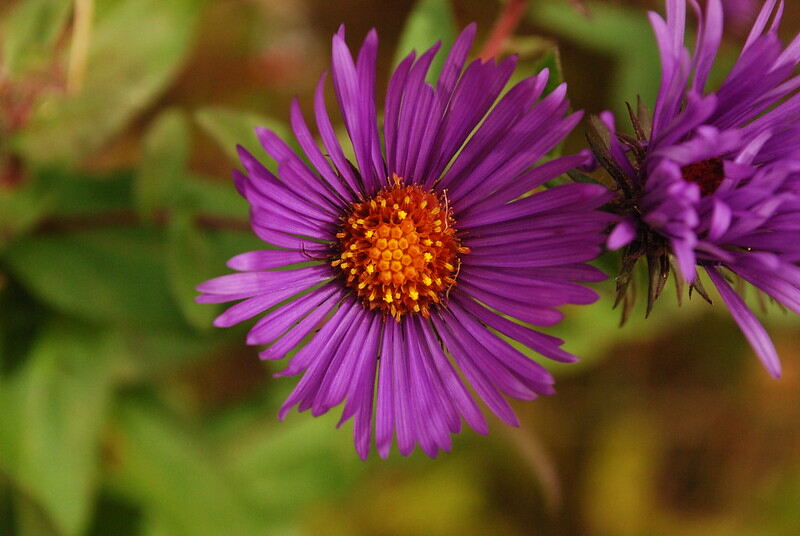
Photo Credit: Joshua Mayer / Flickr / CC BY-SA 2.0
If you’re looking for an end-of-summer showstopper, New England aster is the one to pick. Blooming from August through October, this native wildflower can grow 6 feet tall and sprouts ostentatious, ray flowers outfitted with up to 100 individual purple or pink petals surrounding a yellow, button center. Perfect for rain gardens and butterfly gardens, New England aster also boasts oblong leaves that are rough to the touch on top with a soft underside of fine hairs.
Plant type: Flower
USDA hardiness zone: 4 to 8
Sun: Full sun or partial shade
Soil: Clay or high organic matter that’s well-drained
Duration: Perennial
Fragrance: Yes; of turpentine when crushed
Bloom Time: Summer and fall
Water needs: Medium; water well in the absence of rain
Mature height: 3 to 7 feet
Foliage: Green oblong leaves; top layer rough to touch/underside is soft and covered in fine hairs
Potential hazards: N/A; nontoxic
Maintenance: Low once established; deer-resistant
How to Choose Native Plants for Your Minneapolis Yard
Besides assessing your yard for sunlight, soil conditions, and existing plant life, you can find inspiration for specific types of native plants that’ll thrive in your yard by visiting local sites (like Wood Lake Nature Center and Nokomis Naturescape Garden), studying local planting books/magazines, and consulting with a nearby landscaping expert.
Firmly situated in USDA Hardiness Zone 4b, Minneapolis can have extreme lows of -25 degrees Fahrenheit during the winter months. Native plants are adapted to this type of climate; however, if you plan to include any non-native specimens in your garden, definitely double check the climate zones they can survive in before planting.
FAQ About Native Minneapolis Plants
Since our final frost typically isn’t until late May, it’s best to hold off on planting until June. Be sure to check the guidelines of the specific plants you’re looking to install in your landscape, though, too–– they’ll give a more precise timeline.
Choosing to cultivate a native plant garden (one that only grows plants that occur naturally in the geographic area) helps preserve biodiversity. A few other benefits:
• Keeps plants thriving, as they’re already accustomed to area growing conditions
• Conserves water because native plants can generally do well with local rainfall patterns
• Deep roots prevent soil compaction/recycle stormwater runoff
• Attracts pollinators — native bees, hummingbirds, etc. already know which local plants provide the food they need
Native plants are adapted to the rainfall of the region and are pretty low maintenance when it comes to watering. During a plant’s first growing season, water weekly; after that, area rainfall should be sufficient, as native plants are typically drought-tolerant.
Where to Find Native Plants in Minneapolis
There are more than 2,100 plants native to Minnesota alone, and there’s a bevy of garden stores nearby that stay stocked with them — from goldenrod and honeysuckle to penstemon, sedges, spiderwort, and all the ones detailed above. Here are just a few spot to get your shopping started:
- Blazing Star Gardens
- Ecoscapes Native Nursery
- Mother Earth Gardens
- Sogn Valley Farm
- Natural Shore Nursery
Once you’ve purchased your haul, consult a local lawn care pro to keep your yard looking gorgeous. They’ll assist with mowing, edging, hedge trimming, leaf removal, and the like, so nothing will overshadow your native plant garden. Then, sit back and enjoy the beautiful colors, scents, and pollinating visitors.
Main Image Credit: Black Eyed Susan / Garry Knight / Flickr / CC BY 2.0

